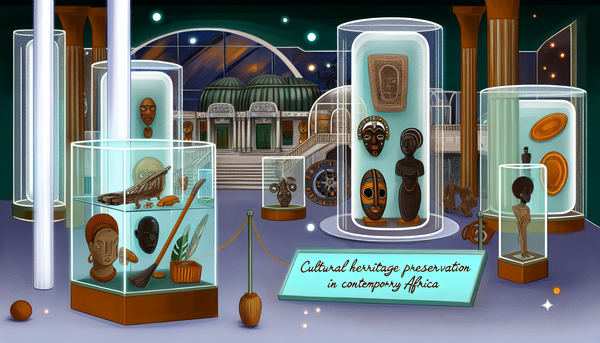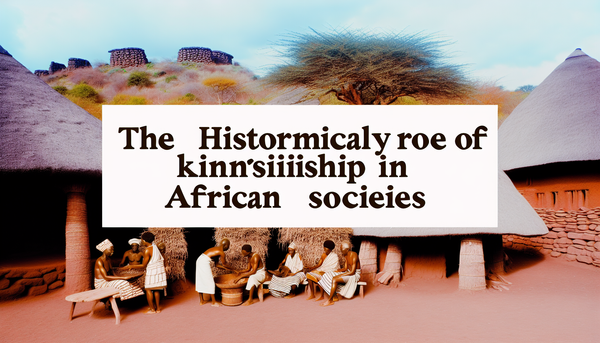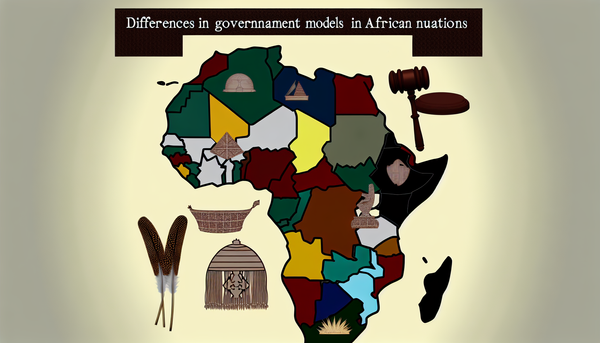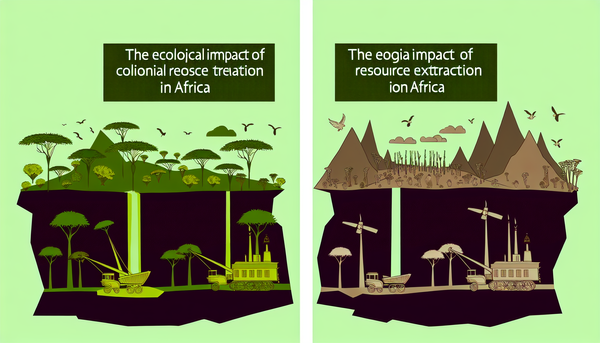Historical Trade Relations Between Africa and Asia
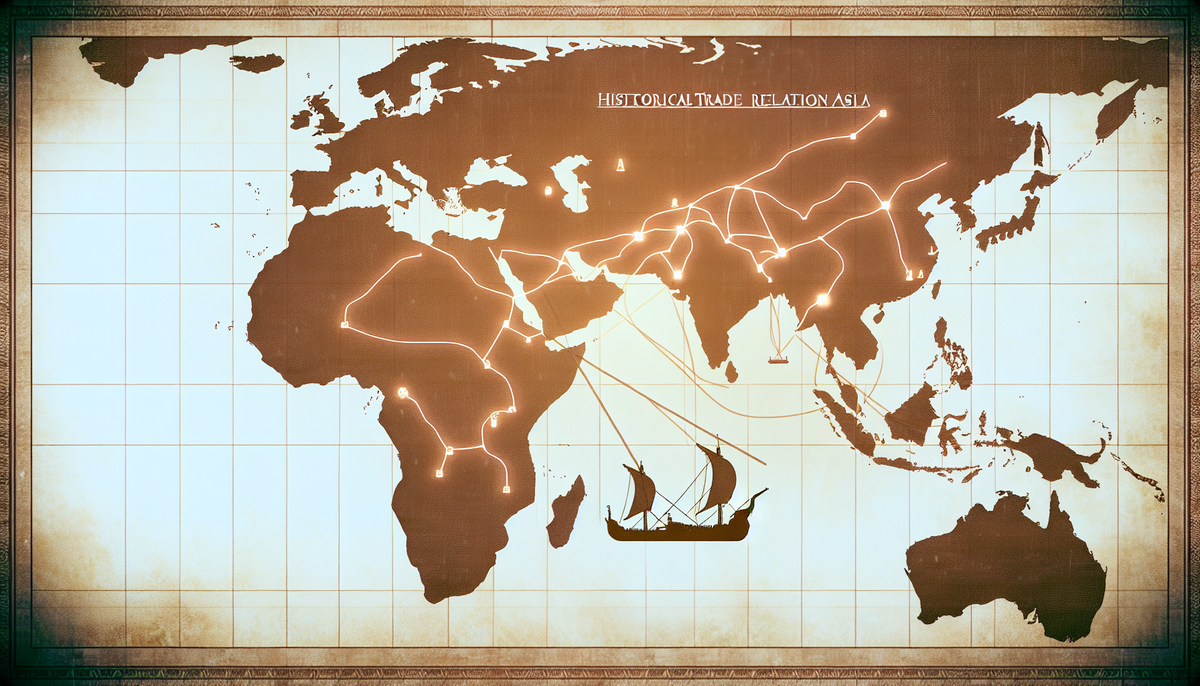
Origins of Early Trade Routes from the African Kingdoms to Eastern Asia
The origins of early trade routes between African kingdoms and Eastern Asia can be traced back to ancient times when communities sought valuable goods and resources. The discovery of crucial trade paths began around the 3rd millennium BCE when African civilizations, such as Egypt and the Kingdom of Kush, began to engage with neighboring regions, seeking precious materials like gold, ivory, and spices.
The rise of empires like Mali and Songhai in West Africa established significant connections with traders from the East. The famous trans-Saharan trade routes facilitated the exchange of salt, gold, and textiles, linking the interior of Africa with the Mediterranean and beyond. This shift in trade dynamics encouraged interactions with Arab traders, who subsequently navigated toward India and further East.
Additionally, the maritime trade routes across the Indian Ocean, particularly through ports in eastern Africa, allowed for the exchange of goods such as ivory, animal hides, and timber. These routes became essential during the early centuries CE, leading to a vibrant interchange not only of trade but also of culture, language, and technology.
Thus, the formation of these early trade networks forged lasting connections between Africa and Asia, laying the groundwork for future economic collaborations.
Impact of the Silk Road on Commerce between African and Asian Civilizations
The Silk Road, an extensive network of trade routes connecting East and West, profoundly impacted commerce between African and Asian civilizations. Established during the Han Dynasty around the 2nd century BCE, the Silk Road facilitated the exchange of silk, spices, precious metals, and other luxury goods. This network not only enhanced the economy of Asian regions but also significantly influenced African kingdoms, particularly those along the trade routes.
African merchants began to engage actively with traders from the East, leveraging the Silk Road's vast reach to access goods from China, India, and Persia. Notably, the introduction of silk and other exotic items captivated the elite in African societies, fostering demand that stimulated economic growth within various regions such as the Mali and Songhai empires.
Additionally, the Silk Road served as a conduit for the exchange of cultural and technological advancements. African traders adopted new agricultural practices and inventions like the magnetic compass, enhancing their navigational skills and encouraging further exploration.
Cultural exchanges, including religions such as Buddhism and Islam, traveled along these routes, enriching the spiritual and intellectual landscape of both continents. The enduring legacy of the Silk Road remains a testament to the far-reaching impact of trade on global interconnectivity and cultural synergy.
Influence of Arabic Traders in Bridging Economies across Continents
Arabic traders played a pivotal role in bridging economies between Africa and Asia, particularly from the 7th century onward, as the rise of Islamic civilization facilitated extensive trade networks. The establishment of the Islamic Caliphates, including the Umayyad and Abbasid dynasties, created a framework that promoted commerce, cultural exchange, and interaction across vast distances.
One significant influence of Arabic traders was their mastery of the maritime routes across the Indian Ocean. They navigated these waters to connect the East African coast with the Arabian Peninsula, India, and beyond. Ports such as Kilwa and Mombasa in East Africa became vital trading hubs where Arabic merchants exchanged gold, ivory, and slaves for spices, textiles, and precious stones from Asia.
Beyond mere commerce, Arabic traders also introduced innovations in trade practices, finance, and navigation. The use of sophisticated accounting methods and financial instruments, such as bills of exchange, revolutionized trade. Furthermore, the transmission of knowledge, including mathematics and science, contributed to advancements in local economies.
The cultural amalgamation resulting from this exchange fostered greater unity and understanding among diverse peoples. Arabic traders not only connected markets but also enriched the cultural and intellectual landscapes of both continents, leaving a lasting legacy on global trade.
The Role of the Indian Ocean in Enhancing Maritime Exchanges
The Indian Ocean has long been a vital artery for maritime exchanges between Africa, Asia, and beyond. Its strategic geographical position allowed for the flourishing of trade routes that facilitated the movement of goods, people, and cultures. By the early centuries CE, the Indian Ocean served as a conduit for commerce that linked bustling ports along the East African coast with powerful trading centers in the Arabian Peninsula, India, and Southeast Asia.
One of the key features of this maritime trade was the monsoon wind system, which enabled sailors to navigate effectively between continents. Merchants traveled from ports like Zanzibar and Mogadishu to destinations such as Calicut and Muscat, exchanging exotic African products—like ivory, gold, and hardwoods—for spices, textiles, and precious gems from Asia. This reciprocal trade not only bolstered the local economies but also enhanced the interconnectedness of regions.
Additionally, the Indian Ocean facilitated the exchange of ideas, religions, and technologies. The spread of Islam along these trade routes saw the establishment of vibrant communities that blended cultural traditions. The Indian Ocean's role in enhancing maritime exchanges ultimately contributed to the establishment of a dynamic economic and cultural nexus, laying the groundwork for global trade networks that continue to evolve today.
Cultural Exchanges and Their Effects on Societal Evolutions
Cultural exchanges between Africa and Asia have significantly shaped societal evolution throughout history. As trade routes flourished, the movement of people brought diverse ideas, beliefs, and customs into contact, enriching the cultures involved. These exchanges were particularly pronounced during the medieval period, when Islamic traders from the Arabian Peninsula and East African coastal merchants interacted with various Asian civilizations.
One of the most profound impacts of these interactions was the diffusion of religions. Islam, introduced by traders, deeply influenced African societies, leading to the establishment of vibrant Islamic cultures and urban centers such as Timbuktu and Gao. This not only transformed local spiritual practices but also enriched education and scholarship, as Arabic literacy and the sciences spread across the continent.
Additionally, cultural exchanges nurtured artistic expression and innovation. African and Asian aesthetics blended, leading to unique art forms, music, and culinary practices. The sharing of agricultural techniques, such as the introduction of new crops from Asia, revolutionized farming practices and food security in various African regions.
Ultimately, these cultural dynamics fostered a sense of interconnectedness, shaping identities and social structures. The enduring legacy of these exchanges continues to influence contemporary societies, highlighting the importance of collaboration and cultural appreciation in human history.
Technological and Agricultural Knowledge Transfer
The transfer of technological and agricultural knowledge between African and Asian civilizations played a crucial role in shaping societies and enhancing productivity throughout history. As trade flourished along routes such as the Silk Road and the Indian Ocean, merchants and travelers exchanged not only goods but also innovative practices and techniques.
One significant area of knowledge transfer was agriculture. Asian crops like rice, sugarcane, and citrus fruits were introduced to African societies, diversifying diets and increasing food security. In return, Africa contributed indigenous crops like millet and sorghum, which found their way to Asia. This exchange fostered agricultural diversity and resilience, adapting farming practices to different climates and environments.
Moreover, technological innovations significantly impacted productivity. For instance, the introduction of the plow and improved irrigation methods from Asia enhanced agricultural efficiency in African regions. Similarly, African techniques in metallurgy and boat construction, such as the dhow, influenced maritime trade practices in Asia, facilitating safer and more efficient sea travel.
The sharing of knowledge was not limited to agriculture; it also encompassed advancements in mathematics, astronomy, and medicine. This mutual exchange of ideas laid the groundwork for future intellectual developments, fostering a spirit of collaboration and innovation that transcended geographical boundaries and shaped the destinies of both continents.
Modern Legacies and Continuations of Historical Trade Practices
The historical trade practices established along ancient routes such as the Silk Road and the Indian Ocean have left profound legacies that continue to shape modern commerce. These routes not only enabled the exchange of goods but also fostered diplomatic, cultural, and economic relationships that resonate today.
In contemporary times, globalization can be seen as a direct descendant of these early trade networks. The flow of goods and services across borders has expanded exponentially, akin to the bustling exchanges that characterized ancient trade. Modern logistics and shipping innovations, such as containerization, can be traced back to the navigational techniques and trading practices developed over centuries.
Additionally, the cultural exchanges initiated through historical trade have led to diverse culinary traditions and hybrid cultures in today's world. For example, the fusion of African and Asian cuisines, seen in dishes that incorporate spices, fruits, and cooking methods from both continents, reflects this rich historical interconnection.
Moreover, technological advancements in communication and transportation have facilitated the continuation of these trading relationships. Countries in Africa and Asia leverage historical ties to engage in economic partnerships, trade agreements, and investments, echoing the collaborative spirit of the past while addressing contemporary global challenges. Thus, the legacies of ancient trade practices continue to influence and inspire modern economic dynamics.
